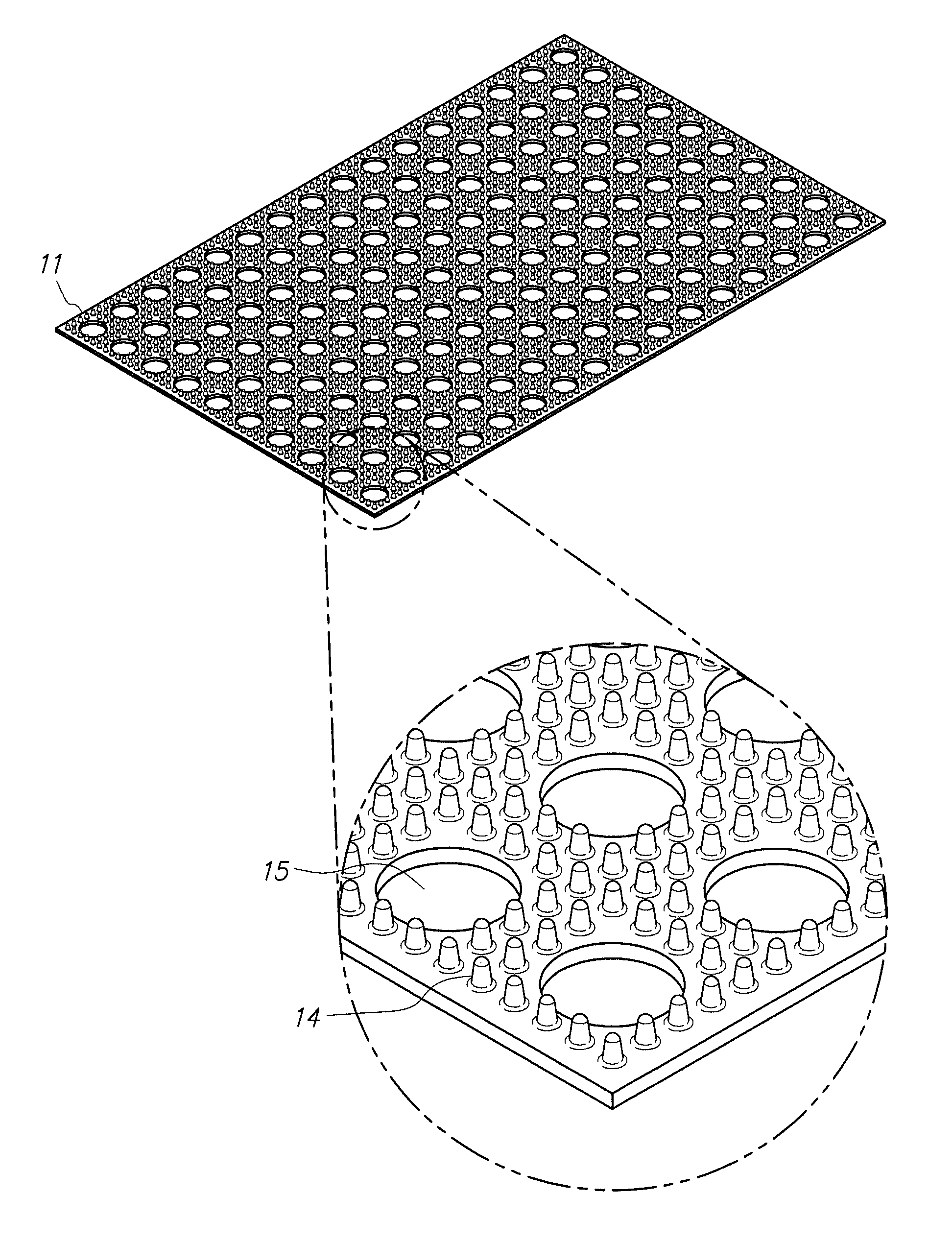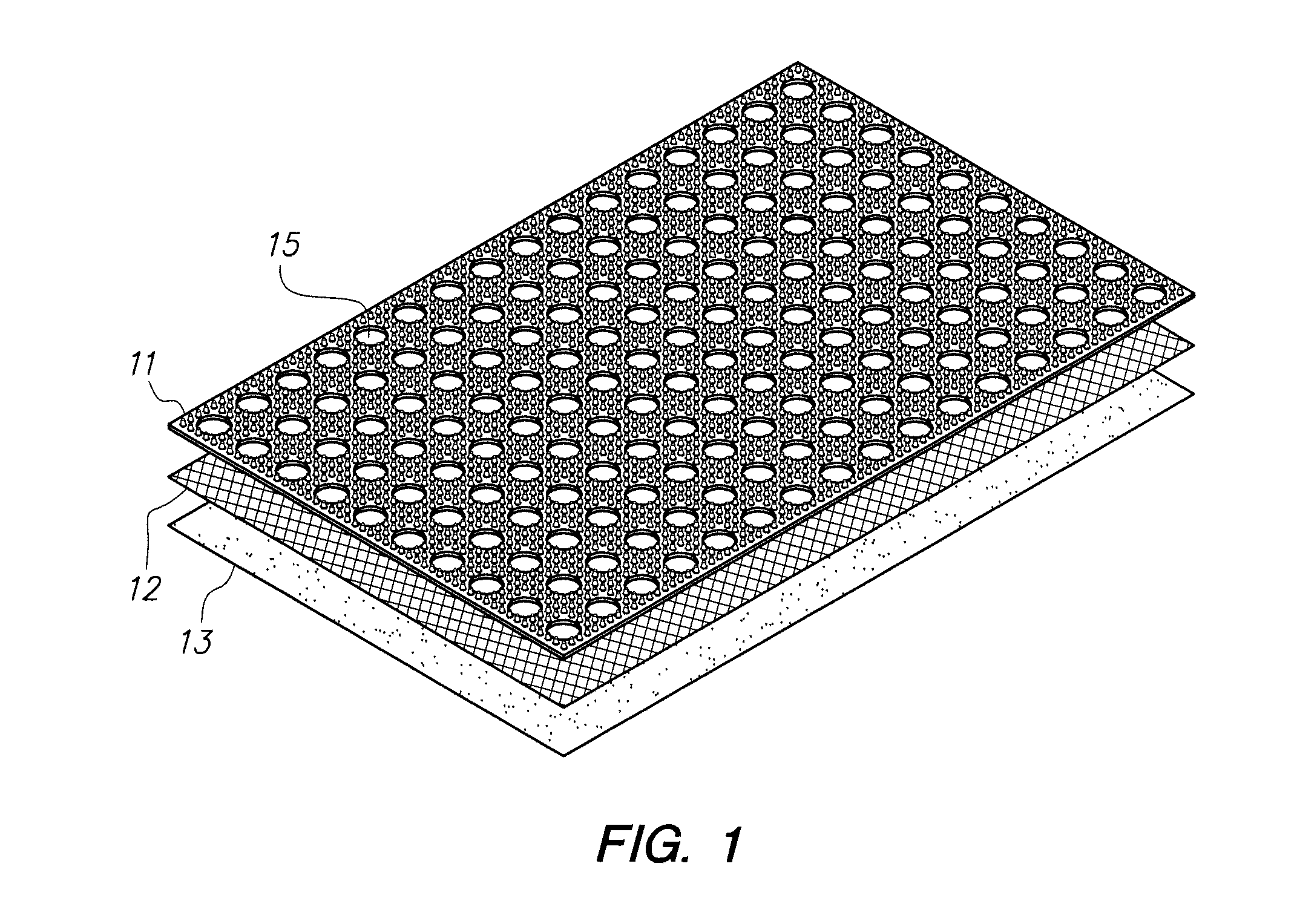Storm drain protector
a storm drain and protector technology, applied in the direction of sewage draining, separation process, filtration separation, etc., can solve the problems of high rate, easy clogging of storm drains, variable flow rate of storm drains,
- Summary
- Abstract
- Description
- Claims
- Application Information
AI Technical Summary
Benefits of technology
Problems solved by technology
Method used
Image
Examples
first embodiment
[0029]In a first embodiment, as shown in FIG. 1, the storm drain protector is rectangular and has three layers 11, 12, 13. The first or top layer 11, as shown in FIG. 2, is a rubber or extruded plastic mat having small (approximately a half inch tall) projections 14 and perforations 15 (approximately a half inch wide) over its entire surface area. The second or center layer 12 is composed of a screen or mesh, having apertures of approximately one-eighth of an inch or greater. The third or bottom layer 13 is composed of a lightweight and very dense felt material, having hydrophobic properties. These three layers are sewn together at the edges or otherwise fastened together and act as a single barrier that is laid over the conventional metal grating of a storm drain.
[0030]In operation, as shown in FIG. 3, water, having debris and sediment, flows horizontally toward the protector. Upon encountering the protector's edge, large debris and sediment 16 is blocked from moving horizontally o...
second embodiment
[0032]In a second embodiment, shown in FIG. 4, in addition to the top layer having small projections 22 and perforations 23, the mat also has small (approximately half inch wide) depressions 24. These depressions 24 serve as a trap into which may fall medium sized sediment particles that would otherwise flow through the perforations 23 and be filtered out by the middle or bottom layer. It is advantageous to trap such material on the surface of the mat so that it does not impede the flow of water through the other layers.
[0033]This embodiment also shows the perforations having an edge 25 that projects above the flat surface of the top layer 21. The edge 25 forms a further barrier to fine debris or sediment flowing into the perforations 23.
[0034]In the embodiment shown in FIG. 5, in addition to or in place of the multiple perforations 32 of the top layer 31, there is a large hole 33 in the top layer 31 at or near its center that is of relatively greater size, i.e., greater that four i...
PUM
| Property | Measurement | Unit |
|---|---|---|
| diameter | aaaaa | aaaaa |
| size | aaaaa | aaaaa |
| height | aaaaa | aaaaa |
Abstract
Description
Claims
Application Information
 Login to View More
Login to View More - R&D
- Intellectual Property
- Life Sciences
- Materials
- Tech Scout
- Unparalleled Data Quality
- Higher Quality Content
- 60% Fewer Hallucinations
Browse by: Latest US Patents, China's latest patents, Technical Efficacy Thesaurus, Application Domain, Technology Topic, Popular Technical Reports.
© 2025 PatSnap. All rights reserved.Legal|Privacy policy|Modern Slavery Act Transparency Statement|Sitemap|About US| Contact US: help@patsnap.com



